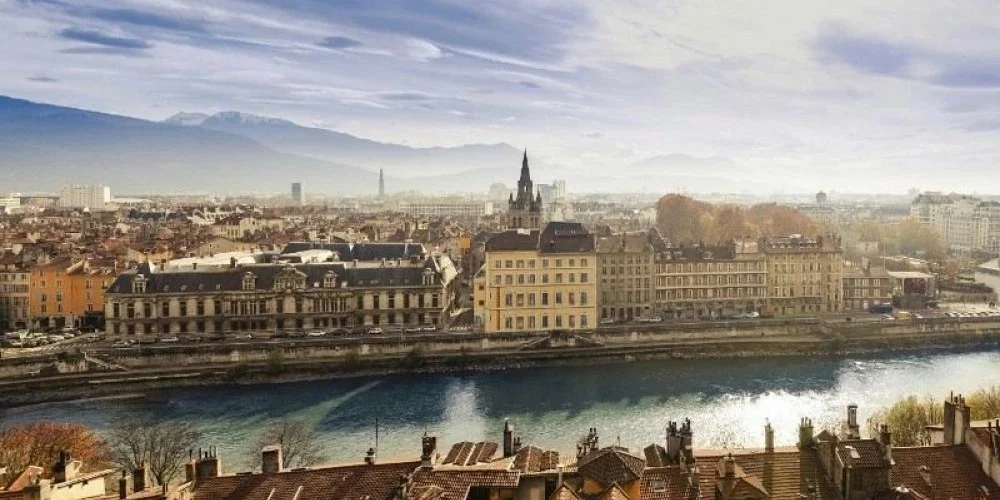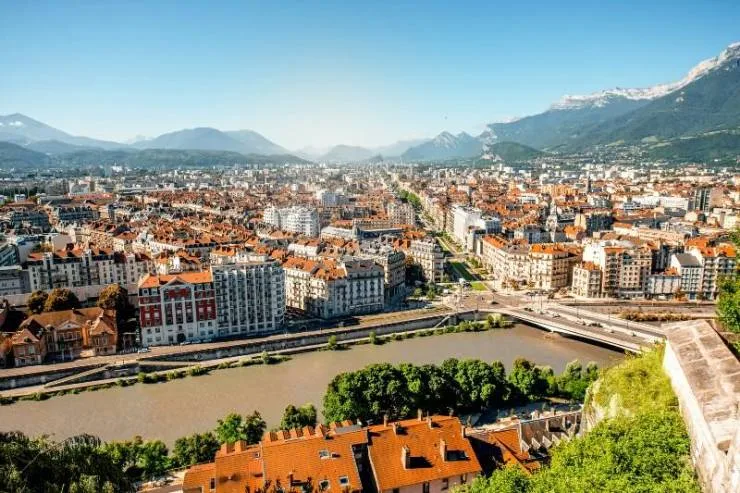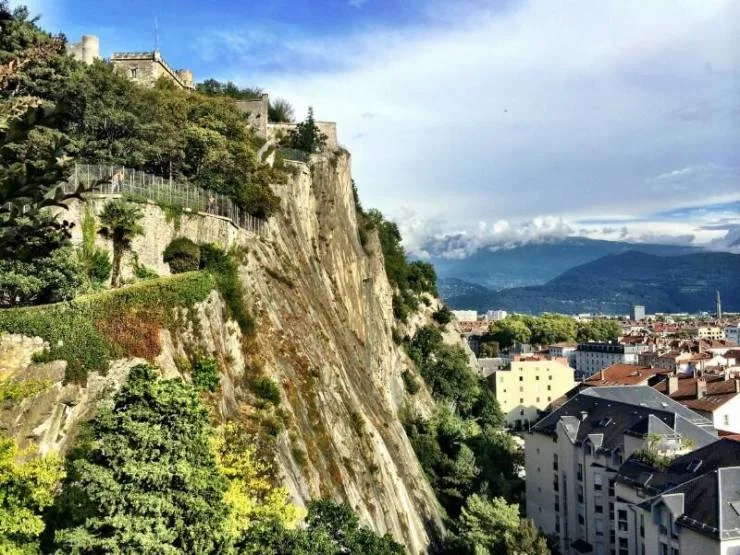Grenoble (France) - the most detailed information about the city with a photo. The main sights of Grenoble with descriptions, guides and maps.
 |
| Grenoble |
City of Grenoble (France)
Grenoble is a city in southeastern France in the Isère department. This is a major industrial and educational center, as well as the capital of the historical region of Dauphine. Grenoble is an ancient city that is over 2000 years old. It captivates with its stunning architecture and magnificent historical character. The city is located in a valley at the foot of the Alps and is one of the most picturesque places in France, surrounded by snow-capped peaks and green forests. Grenoble also boasts a beautiful historic center with typical old European streets and an impressive number of museums.
 |
| Grenoble |
Geography and Climate
Grenoble is located in the valley of the Isère River at the foot of the French Alps. The city is close to the Italian border between Lyon and Turin. The climate is temperate with warm summers (which on average are slightly cooler than in Central France) and cool winters. During the year, about 1000 mm of precipitation falls here, which are distributed evenly throughout the year.
 |
| Grenoble |
Information for Tourists
- The population is more than 160 thousand people.
- Area - 18.13 km 2.
- The language is French.
- Currency - euro.
- Visa - Schengen.
- Time - Central European UTC +1, summer +2.
- Near Grenoble there are three airports at once: Isère airport (40 km), Lyon airport (100 km) and Geneva airport (157 km). Therefore, getting here by plane is not difficult.
- By train you can get to Grenoble from Paris, Lyon, Geneva, Valence.
- Not far from the city there are several ski resorts, including the famous l'Alpe d'Huez.
- Large shopping center - Grand Place. Markets: Sainte-Claire Les Halles, L'Estacade at Cours Jean Jaures. For street shopping, head to the Place Grenette area.
- Grenoble is famous for its pastries and confectionery (stuffed buns, cakes with nut cream).
- Bars and clubs are located between Place Grenette and Notre Dame.
- At night it is best to avoid the Ville Neuve area. Although, in general, Grenoble is a safe city.
 |
| Grenoble |
History
The first mention of Grenoble dates back to the 1st century BC. At that time, a fortified settlement of the Celtic tribe of the Allobroges Kularo was founded here, which was later subjugated by the Romans. In the 3rd century, a fortress was built around the small Roman town. In 380 the city was named Gratianopol. At the end of the 4th century, Christianity began to spread and a diocese was founded in Grenoble.
After the collapse of the Roman Empire, the city became part of Burgundy, and then until the 10th century it was part of the kingdom of Arles. In 1032 Grenoble became part of the Holy Roman Empire. In the 11th century, during the reign of the Counts of Albon, the city grew significantly and became the capital of the county of Dauphine. In 1339 a university was founded here. In 1349, the lands of the Dauphine were sold to France, and Grenoble became a border town with the Duchy of Savoy.
As part of France, Grenoble was an important strategic city in which French troops were stationed. In the 19th century, industrialization turned it into one of the most important industrial centers in the southeastern part of the country.
 |
| Grenoble |
Attractions
The old town of Grenoble (Vieille Ville) is a delightful area of narrow cobblestone streets, small pretty squares and beautiful old buildings. The old episcopal palace (which now houses the museum de l'Ancien Évêché) is located on the remains of ancient Roman ramparts. Markets are still held in the medieval Place aux Herbes. And the Palace of Justice of the 15th century impresses with a facade in the style of flamboyant Gothic and early Renaissance.
The Musée Grenoble is one of the most prestigious art museums in France and has a stunning collection of paintings from the Middle Ages to the present. Here are masterpieces of the 15th - 20th century, including works by Rubens, Gauguin, Picasso, Monet and many others.
Fort de la Bastille is a hilltop fortress, from its impressive height offering stunning panoramic views of the Alpine landscape. Once there was a prison, and now a military museum and a center for contemporary art.
Grenette is the main city square of Grenoble, surrounded by quaint historic houses that now house cafes and shops. In the 17th century, this space was used for hay and grain trading. In the center of the square is an elegant fountain with winged cherubs and dolphins.
The Lesdigier Mansion is a historic building from the 17th century, which is located on the border of the old city. The mansion has an elegant garden, which is a public park and a popular recreation area.
Porte de France is a historical monument of the 17th century, which is now a memorial to fallen wars.
Perret is an 84-meter reinforced concrete tower that was built in 1924 and is the first of its kind in Europe.
Notre Dame is a medieval church built on the ruins of the Gallo-Roman settlement of Cularo. The current building dates from the 13th century, has an interesting Romanesque bell tower, flamboyant Gothic elements of the choir, and wooden bas-reliefs from the 17th century. Nearby is the episcopal palace, which houses a museum with artifacts from the ancient past of the city.
The Fountain of the Three Estates is an interesting fountain from the late 19th century, located in front of Notre Dame Cathedral.
Place Victor Hugo is an elegant urban space built in the 19th century on the site of old bastions and military barracks.
Saint-André is a beautiful 13th-century collegiate church in the Lombard style.
Church of St. Bruno is a neo-Romanesque church made of artificial stone in the western part of the city, built in the 19th century.
The Island Tower is a 14th-century medieval structure that used to house an arsenal.
Port Saint Laurent - bridge gate built in 1837.
Saint-Louis is a baroque church completed in 1699.
The Sacré Coeur is a beautiful basilica built in the style of the famous church on the Montmartre hill in Paris.